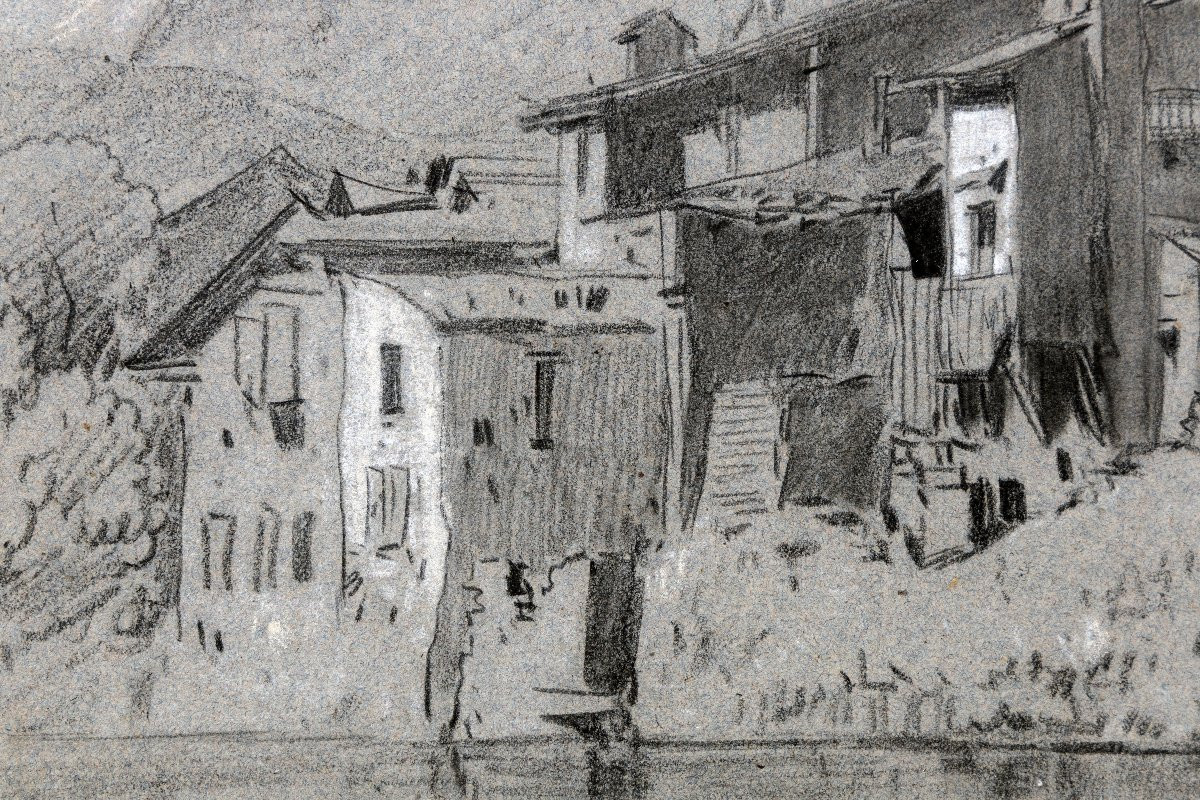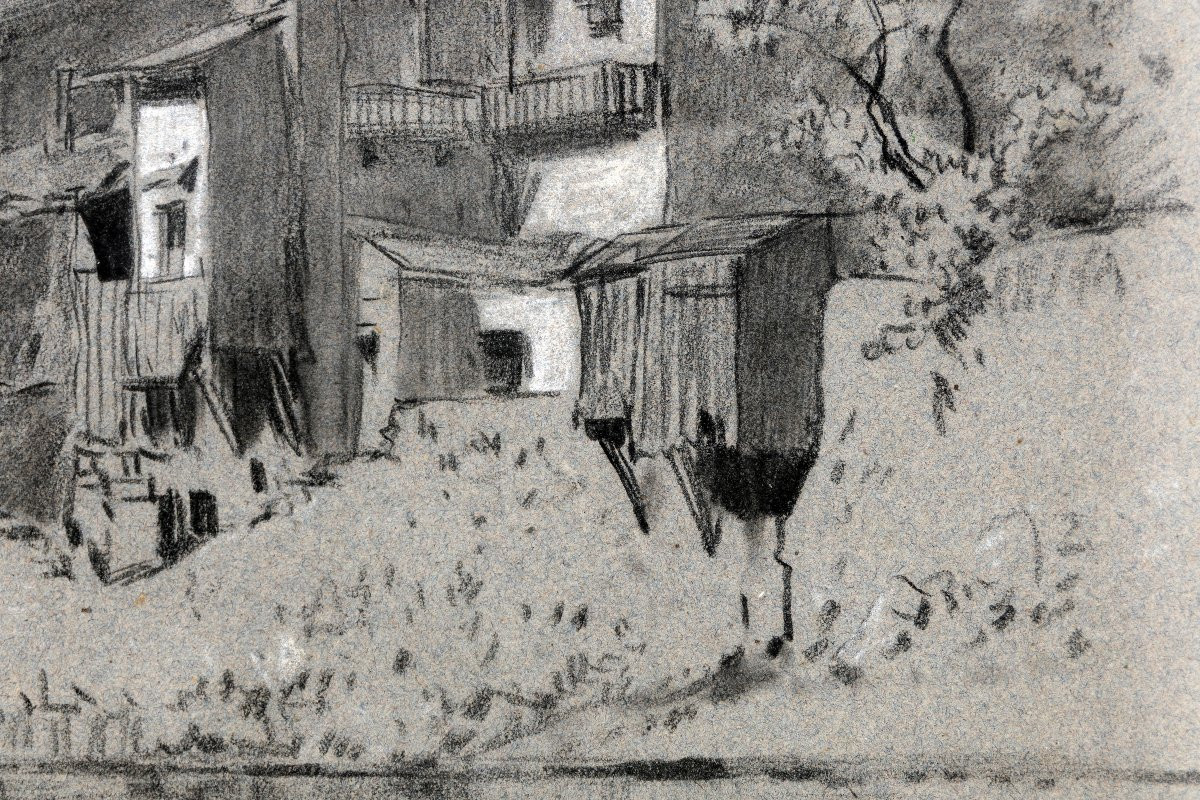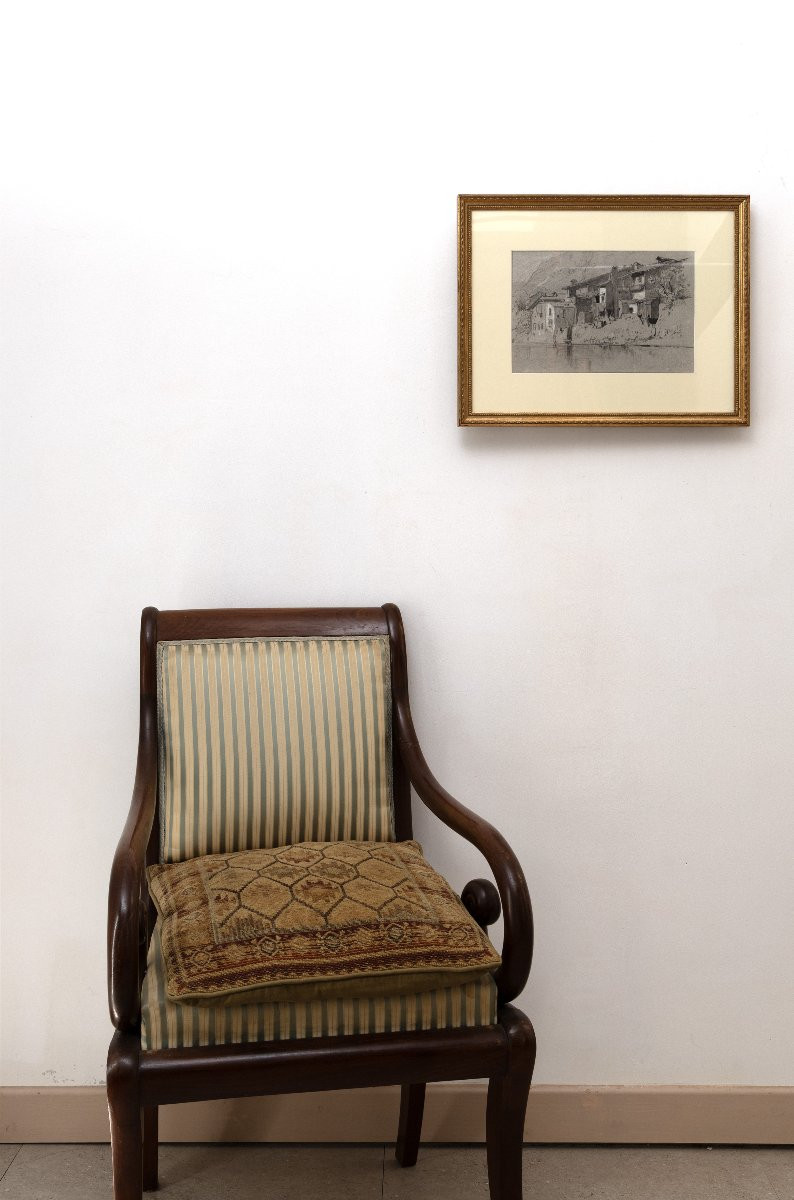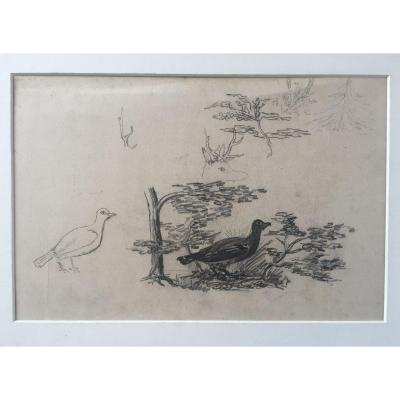This drawing was probably made in situ, as Cicéri stayed in the Pyrenees around 1858. He also had a collection of lithographs published in Luchon based on drawings of the region.
The houses are spread out on the hillside, right down to the water's edge. Several of them have balconies sheltered by overhangs. The houses seem embedded in the mountain seen in the background. The choice of pencil and gray paper reinforces the mineral character of the site. Some facades are whitewashed with chalk, which adds brightness and contrast to the whole.
The work is signed lower right. An old label on the back of the work mentions a studio stamp, next to the handwritten signature. The work is in very good condition: minor foxing, small, almost invisible crease at the bottom. It is placed under glass and passepartout, in a modern gilded frame, in good condition.
The artist
Étienne Eugène Cicéri was born on January 27, 1813 in Paris and died on April 21, 1890 in Bourron-Marlotte. He is the last son and student of the painter and scenographer Pierre-Luc-Charles Cicéri (1782-1868), and the grandson of the painter Jean-Baptiste Isabey (1767-1855). His mother is the sister of the painter Eugène Isabey (1803-1886).
He received his first teaching from his father, as well as from his uncle Eugène Isabey. Eugène Cicéri was then influenced by the Barbizon School. He worked on landscapes in Fontainebleau and its surroundings, and was one of the first artists to settle in Marlotte (later Bourron-Marlotte), a village where he settled in 1849.
He exhibited for the first time at the Salon in 1851. The following year, his View taken on the banks of the Loing earned him a second-class medal. Painter and watercolorist, he sacrificed to the fashion of "traveling artists" and published collections of lithographs based on his drawings, which demonstrate a greater concern for realism than his romantic predecessors, using the new medium of photography as documentation.
His works are present in several French museums: Louvre Museum, Ursuline Museum (Mâcon), Museum of Fine Arts of Rennes, Magnin Museum (Dijon), as well as in Angers, Troyes, Brest, Perpignan. His collections of lithographs and watercolors are preserved in various institutions, testifying to his contribution to naturalist engraving.
Work visible at the gallery (07240)
Shipping: contact us for shipping costs in France and abroad.














































 Le Magazine de PROANTIC
Le Magazine de PROANTIC TRÉSORS Magazine
TRÉSORS Magazine Rivista Artiquariato
Rivista Artiquariato